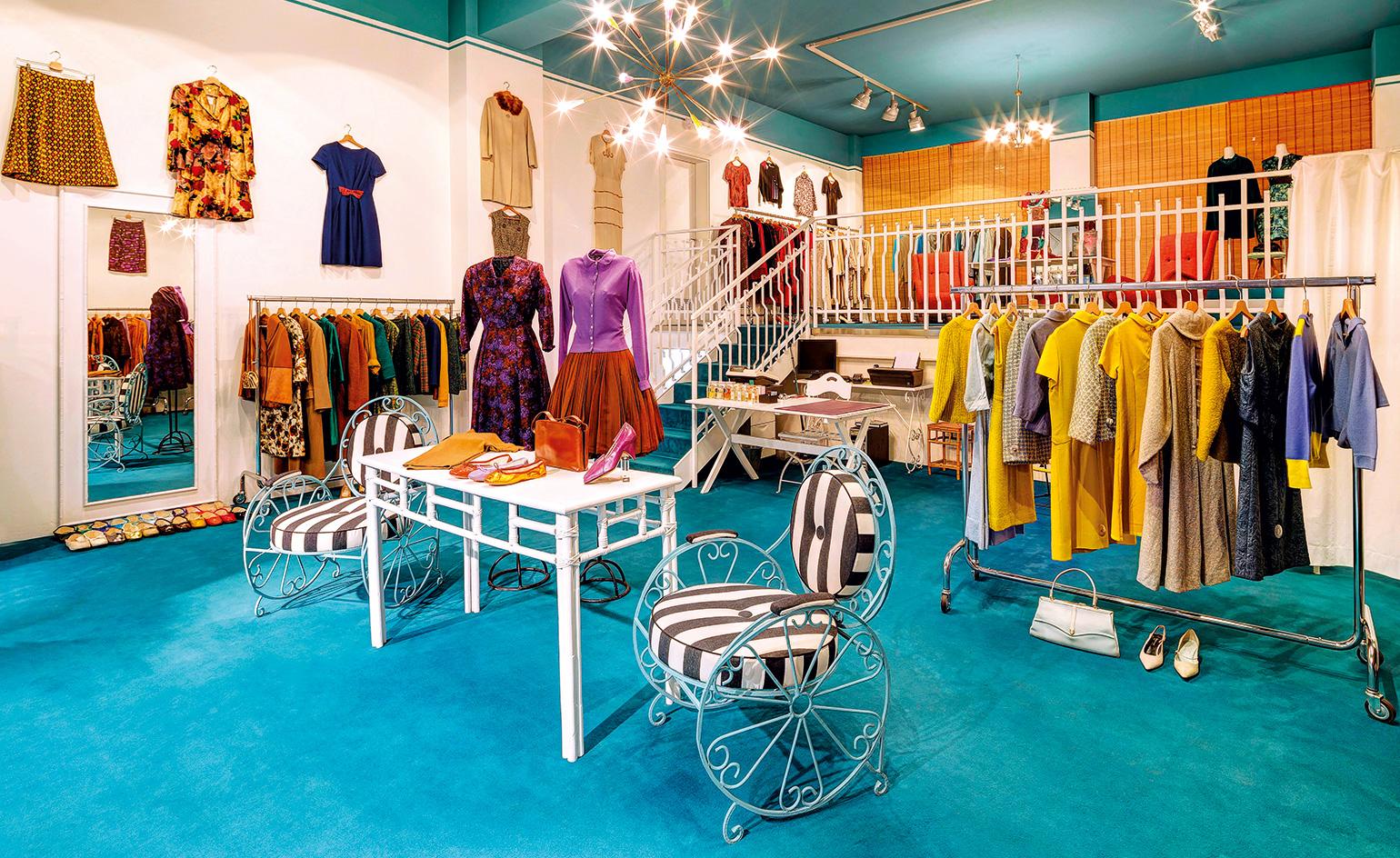
Remote, formal and cool, the Milanese can be fiercely private people. Even in this age of self-promotion, prising open the doors to their magnificent apartments remains a challenge. Take Chichi Meroni, a sixth-generation Milanese who has built a vintage clothing and furniture empire on a single block of city-centre real estate. Entitled L’Arabesque, her business in Largo Augusto includes a bustling café, a bookstore, a midcentury design gallery and three shops that sell vintage fashion and her own men’s and womenswear ranges.
Above this rare island of 1950s Milanese design sits Meroni’s apartment, in a superb building designed by midcentury local architect Paolo Buffa. The residence, with its immaculate lines and elegant furnishings, is the unofficial heartbeat for Meroni’s entire retail operation. And yet, she lives inconspicuously and her home remains a very well-kept secret. ‘I am 200 per cent Milanese,’ she says, explaining her adhesion to the city’s strict codes and old-school traditions that put a premium on mannered discretion.
Meroni speaks quietly and carefully from her orchid-filled dining room. The peaceful sea-green of the walls is punctuated by blood-red Chinese artworks and burnt orange velvet-covered faux bamboo chairs. The room is typical of the whole space – warm, well balanced, beautifully curated, restrained, but not stiff.
Meroni is the daughter of aesthetically attuned parents, who lived in the apartment before her. Her mother, a former model, ran in elite fashion circles. Her father, a successful industrialist and builder, was friends with Buffa, and commissioned him to design the eight-storey palazzo, completed in 1949.
As a girl, Meroni trailed after her mother as she visited antique stores in Paris and Milan and followed her father across the globe on design excursions, clearly formative experiences. She launched her first fashion venture in Buenos Aires in the 1970s and later opened an interior design studio when she moved back to Milan in the 1980s. Evidence of her father’s impeccable design taste is sprinkled across her home, from pristine 1950s Indian palisander cabinetry and Canaletto walnut sideboards designed by Buffa to glass-topped consoles with elegant, Ico Parisi-esque legs, and a collection of important Asian art and objects.
One early 20th-century silk Japanese screen is so rare that a group of Japanese tourists called Meroni to fix an appointment to view it privately.
The building itself possesses many of the hallmarks of the city’s best Fascist-era architecture: a sober, imposing facade, sophisticated restraint and a wicked focus on details, from saucer-sized brass doorknobs to enormous oak doors carved with geometric designs.
To this austere base, Meroni has added style and spice. She is a talented colourist, washing walls in subtle but impactful shades of lime, china blue, pumpkin and her favourite sea-green. ‘These are fixed colours in my life,’ she says of the distinctive hues. ‘I put them in my country house as well.’
Exuberant upholstery designed by Gio Ponti covers a Scandinavian armchair in the living room. Ceramic collections, such as a group of Richard Ginori orange vases, mix with climbing ivy and vases of tulips. Dramatic lighting hangs from the ceiling, such as the sitting room’s smoked purple Venini glass chandelier.
Befitting the fashion archivist that Meroni is, closets are everywhere. Guest rooms have been transformed into dressing rooms and her rich collection of vintage clothes is lined up like precious bootie within curtained cabinets or under linen covers. ‘My closet is our fashion archive,’ she says of the enormous selection. ‘But actually I live in black trousers and a turtleneck.’
Meroni’s atelier is located on the third floor of the building, where she designs new women’s and men’s fashion and oversees her sprawling retail venture.
For this year’s Salone del Mobile, Meroni has partnered with Belgian artist Isabelle de Borchgrave on an art nouveau-inspired exhibition in her design gallery. The shift back to the turn of the century is new design territory for Meroni. ‘I was thinking of the liberty period in Milan and the art nouveau moment in Paris and seeing the connections today,’ she explains. ‘It seems to me to be a period that is coming back.’
Her sentiment echoes those among Milan’s furniture experts who express a certain degree of midcentury fatigue. ‘The 1950s and 1960s represented such a wonderful, clean aesthetic compared to the 1980s and 1990s, which were so heavy,’ Meroni observes. ‘But then everyone got into [midcentury design]. It became maybe too fashionable.’
The show will feature new furniture and art by de Borchgrave, and art nouveau design that Meroni has stumbled across. ‘There are so many beautiful things from that period,’ she says. ‘The colours are fabulous. So is the glasswork. I wanted to put the spotlight back onto something that’s been forgotten.’
As originally featured in the May 2016 issue of Wallpaper* (W*206)

Pictured left: Meroni’s L’Arabesque design gallery, with a 1950s sofa, a faux bamboo coffee table designed by Meroni, a 1950 standing lamp and a 1955 Stilnovo wall sconce. Right: Meroni in the sitting room with a 1924 ’Scarlatti’ chandelier by Venini, surrealist vases with ceramic ’rope’, ’C1940’ by Zaccagnini, a 1950s sideboard and armchairs.
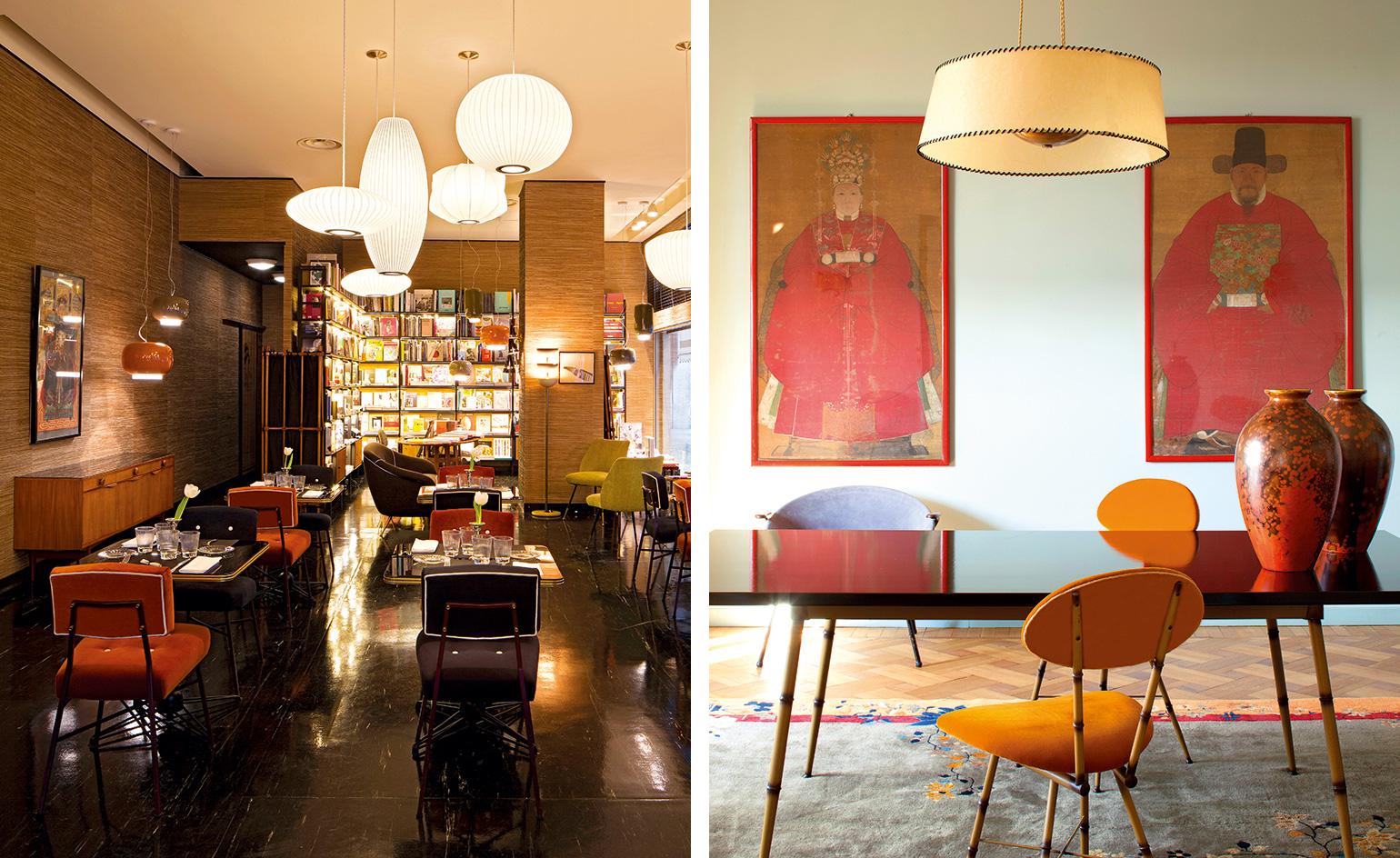
Pictured left: the café and bookshop that is also part of Meroni’s retail empire. Right: in the dining room, a 1950s Fontana Arte chandelier, 1950s faux bamboo table and chairs, and antique Chinese Emperor and Empress ‘Ancestor’ portraits.
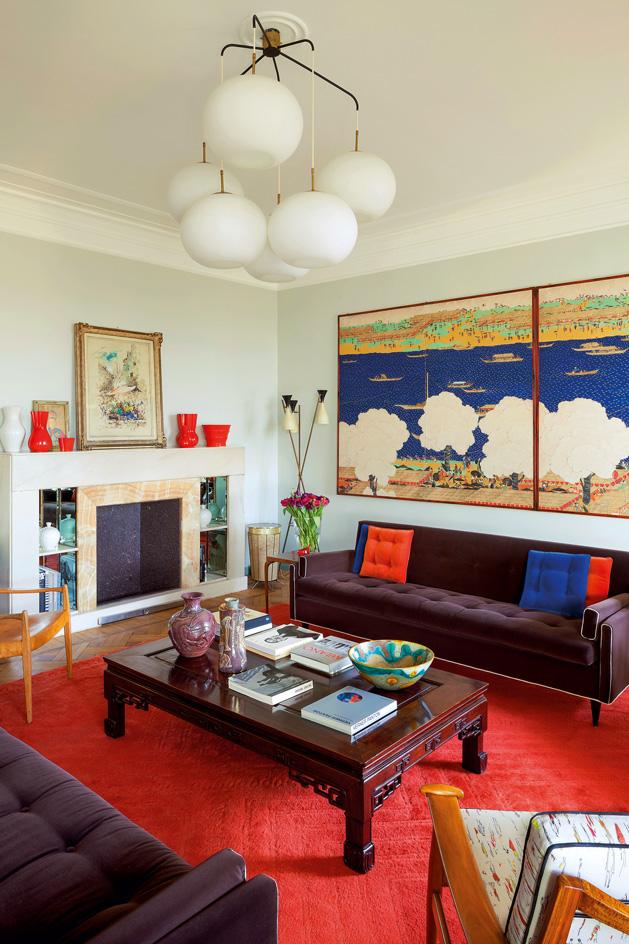
In the living room, a Japanese silk screen from the Taishō period (right wall), a sofa designed by Meroni, an antique Chinese coffee table, an armchair with upholstery designed by Gio Ponti and, on the mantelpiece, orange vases by Richard Ginori.
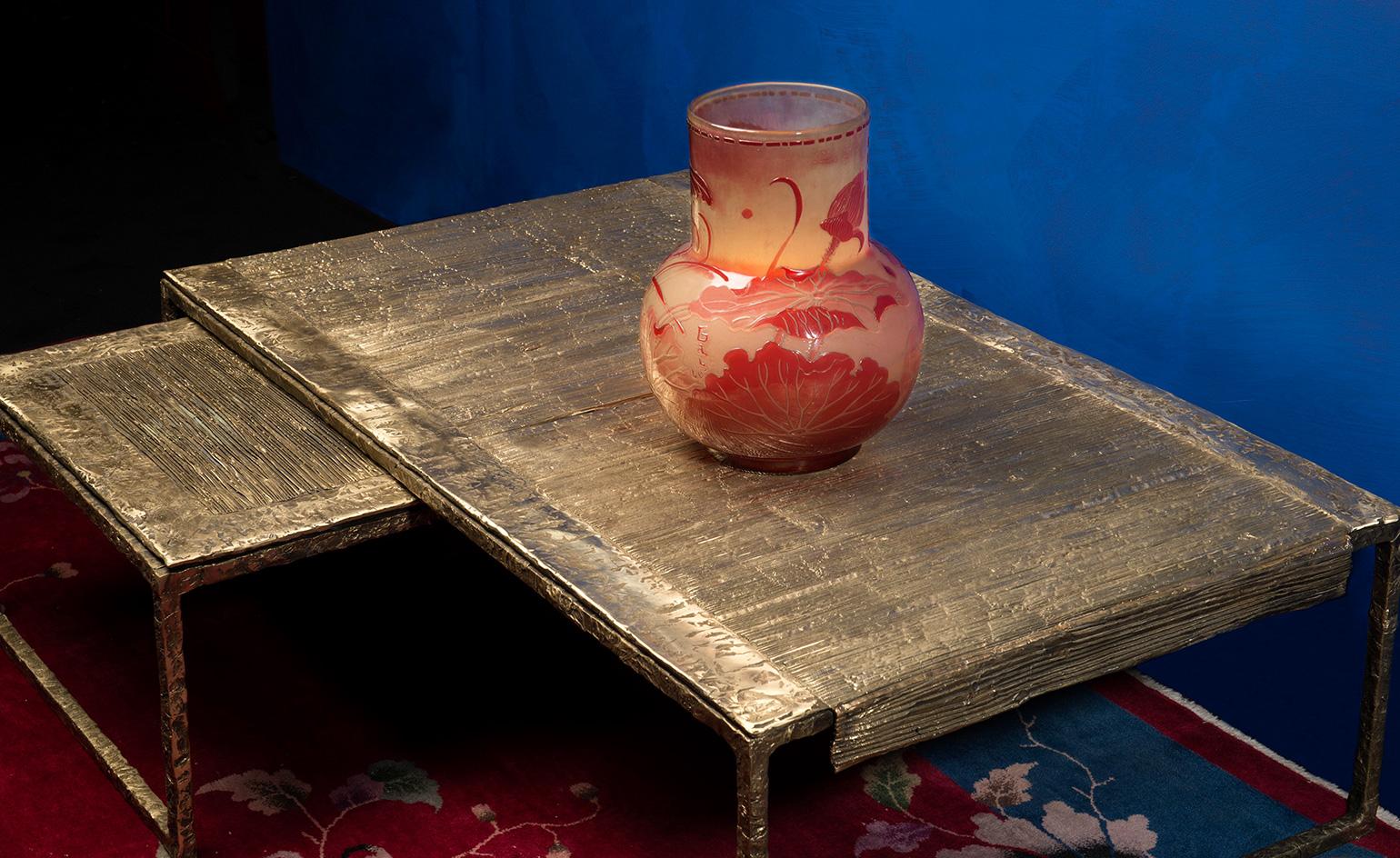
For this year’s Salone del Mobile, Meroni has partnered with Belgian artist Isabelle de Borchgrave on an art nouveau-inspired exhibition in her design gallery. The shift back to the turn of the century is new design territory for Meroni.
INFORMATION
‘Il Liberty di Milano e l’Art Nouveau di Parigi incontrano les Rêves de Papier di Isabelle de Borchgrave’ is on view until 17 April. For more information, visit L’Arabesque Design Gallery’s website
ADDRESS
L’Arabesque Design Gallery
Largo Augusto 10
Milan
Receive our daily digest of inspiration, escapism and design stories from around the world direct to your inbox.
JJ Martin
-
 Modern masters: the ultimate guide to Keith Haring
Modern masters: the ultimate guide to Keith HaringKeith Haring's bold visual identity brought visibility to the marginalised
-
 Discover a hidden culinary gem in Melbourne
Discover a hidden culinary gem in MelbourneTucked away in a central Melbourne park, wunderkind chef Hugh Allen’s first solo restaurant, Yiaga, takes diners on a journey of discovery
-
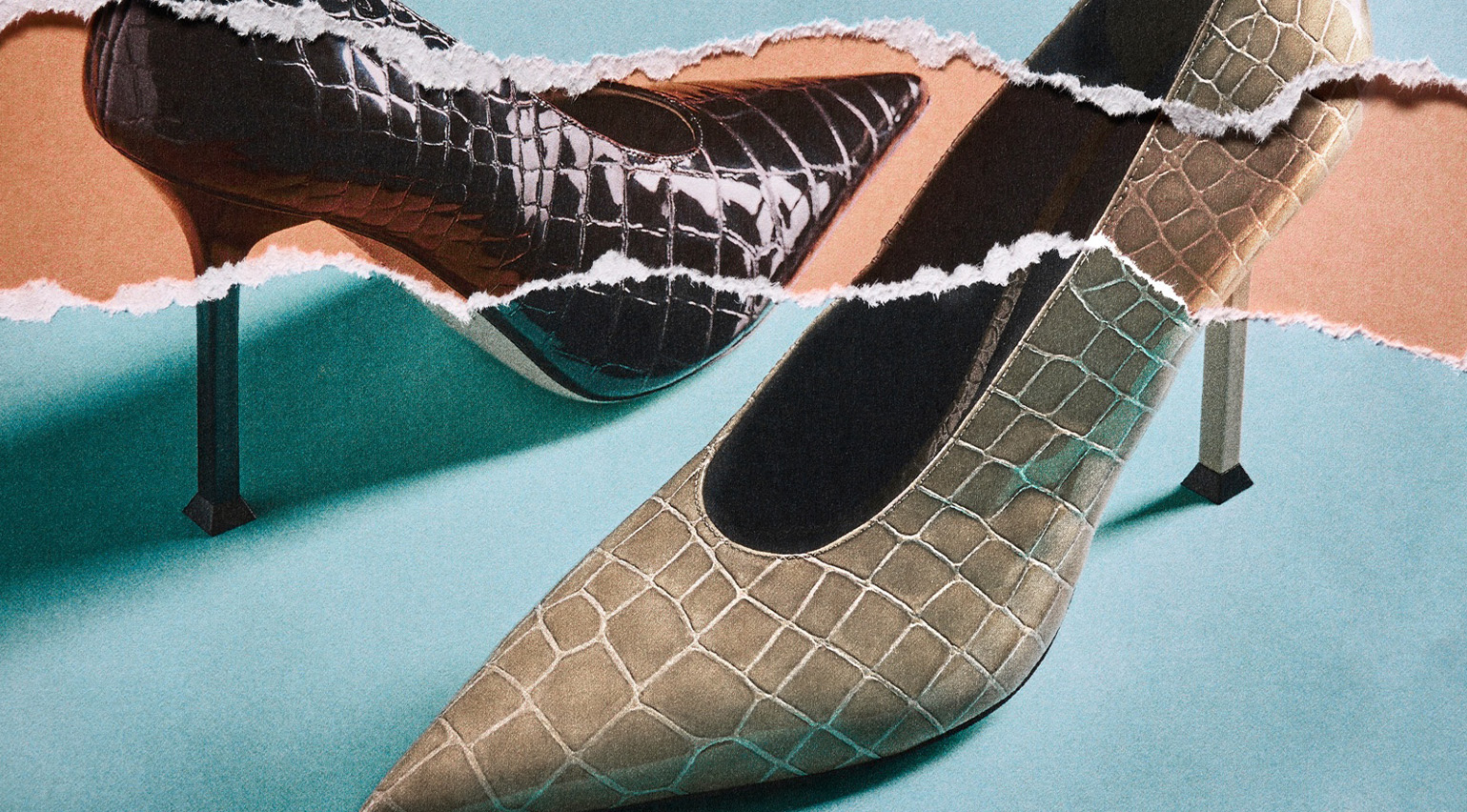 Nina Christen is the designer behind fashion’s favourite – and most playful – shoes
Nina Christen is the designer behind fashion’s favourite – and most playful – shoesShe’s created viral shoes for Loewe and Dior. Now, the Swiss designer is striking out with her own label, Christen
-
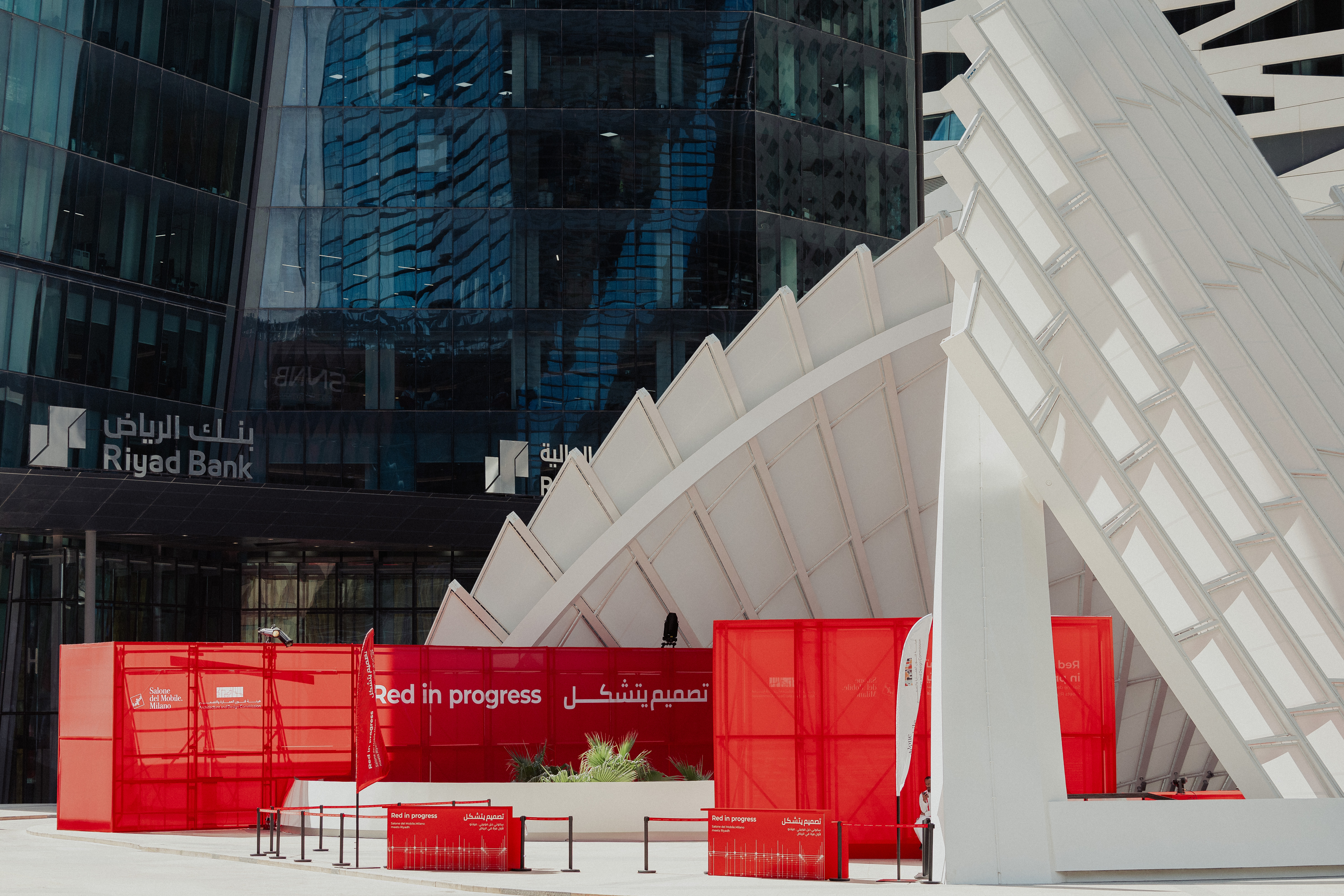 ‘Locally anchored and globally conversant’: Salone del Mobile debuts in Saudi Arabia
‘Locally anchored and globally conversant’: Salone del Mobile debuts in Saudi ArabiaSalone del Mobile lands in Riyadh (26-28 November 2025), bringing its creative and manufacturing know-how to one of the world’s fastest-growing markets and setting the stage for Italo-Saudi design relations
-
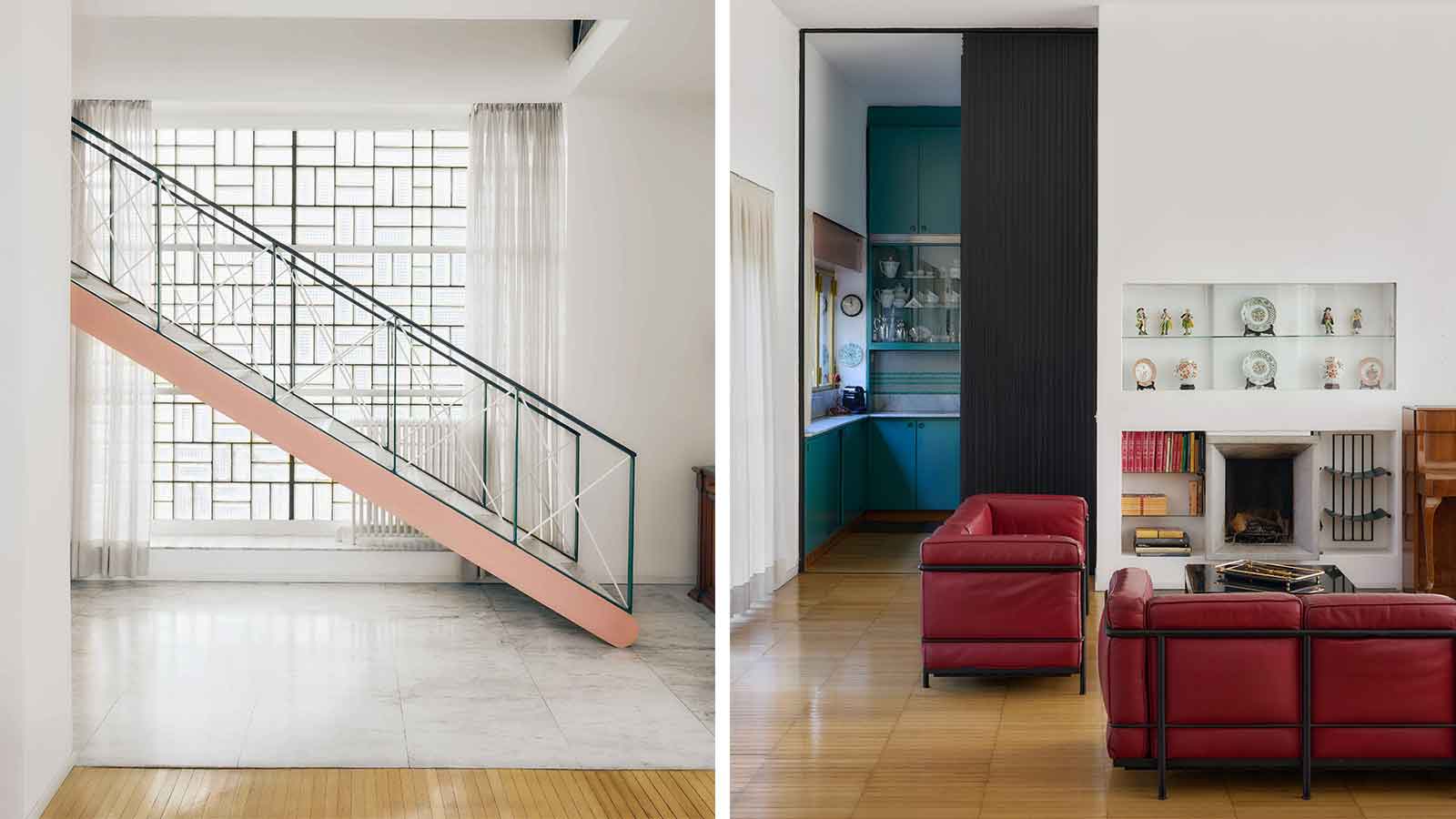 Alcova 2026 locations include a Rationalist gem and an abandoned church
Alcova 2026 locations include a Rationalist gem and an abandoned churchAlcova returns for an 11th edition in 2026 (20-26 April), once again opening up two exclusive Milanese locations, the Baggio Military Hospital and Franco Albini's Villa Pestarini
-
 Salone del Mobile 2026 will embrace collectible design with Salone Raritas
Salone del Mobile 2026 will embrace collectible design with Salone RaritasSalone del Mobile has Salone Raritas, a new exhibition space at the fair (21-26 April 2026), curated by Annalisa Rosso and designed by Formafantasma
-
 O Milano! Design's epic annual spectacle in photos
O Milano! Design's epic annual spectacle in photosCall us biased, but we believe that Milan Design Week is, at this moment in time, the greatest show on earth
-
 ‘Romantic brutalism’ rethinks Polish craft
‘Romantic brutalism’ rethinks Polish craftAn exhibition in Warsaw gives local makers their due, looking inside the burgeoning world of Polish design
-
 Eight designers to know from Rossana Orlandi Gallery’s Milan Design Week 2025 exhibition
Eight designers to know from Rossana Orlandi Gallery’s Milan Design Week 2025 exhibitionWallpaper’s highlights from the mega-exhibition at Rossana Orlandi Gallery include some of the most compelling names in design today
-
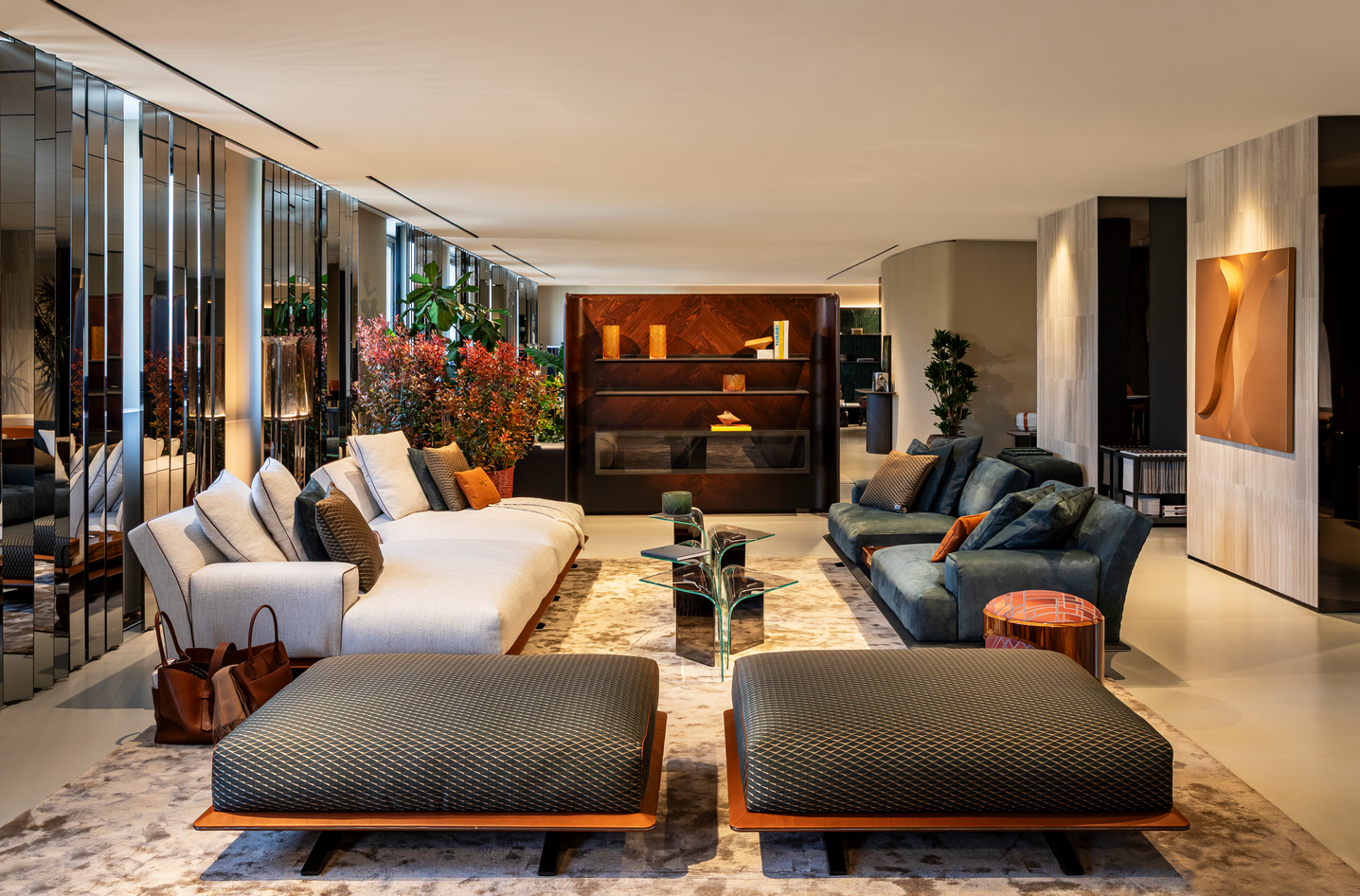 Bentley’s new home collections bring the ‘potency’ of its cars to Milan Design Week
Bentley’s new home collections bring the ‘potency’ of its cars to Milan Design WeekNew furniture, accessories and picnic pieces from Bentley Home take cues from the bold lines and smooth curves of Bentley Motors
-
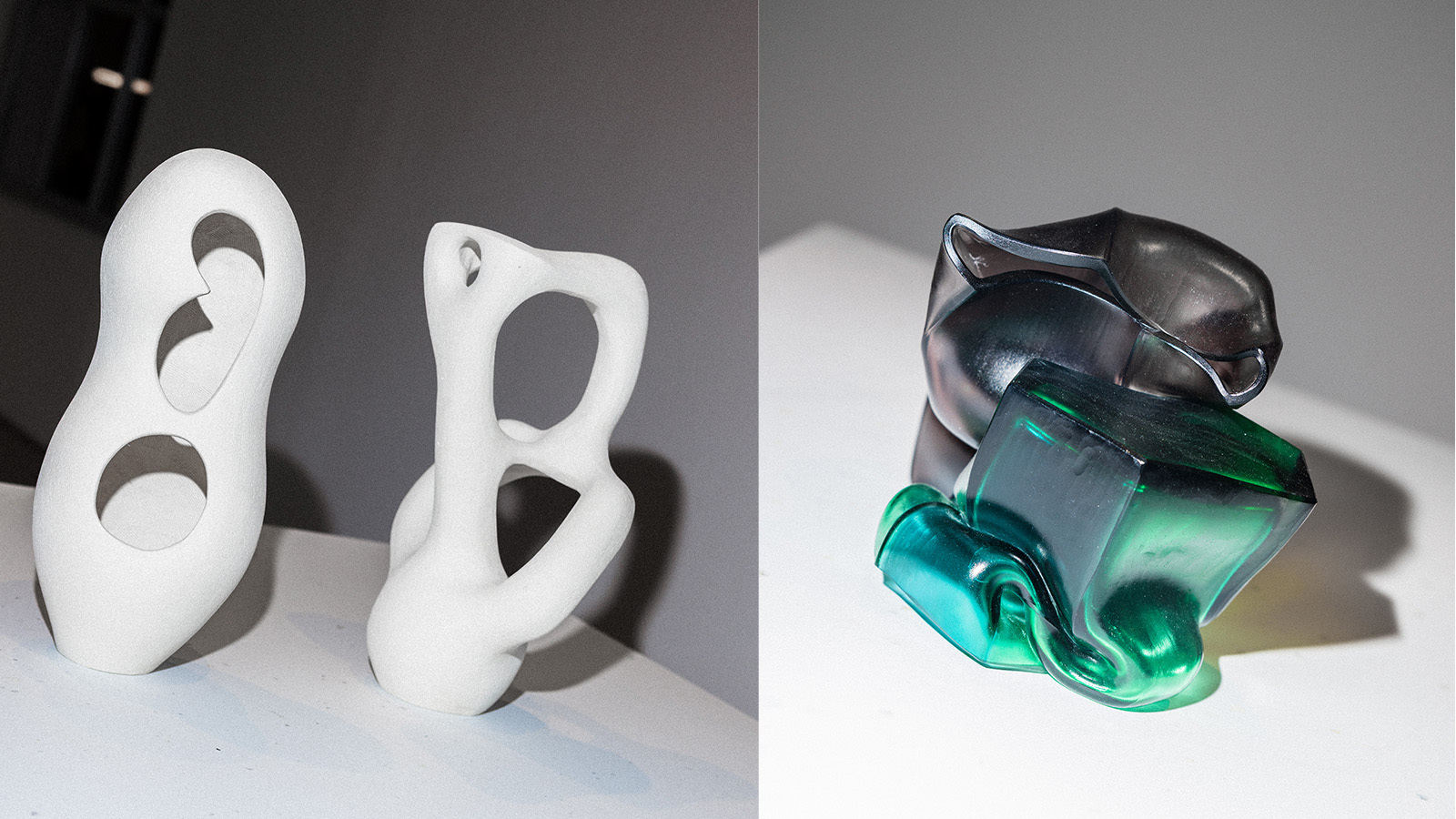 StoneX partners with Wallpaper* for material alchemy at Milan Design Week and beyond
StoneX partners with Wallpaper* for material alchemy at Milan Design Week and beyondThe natural stone purveyor teams up with Wallpaper* for a three-year partnership of material adventures, starting with an exhibition at Triennale di Milano